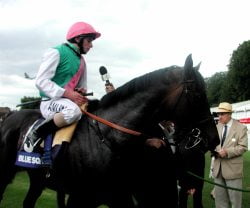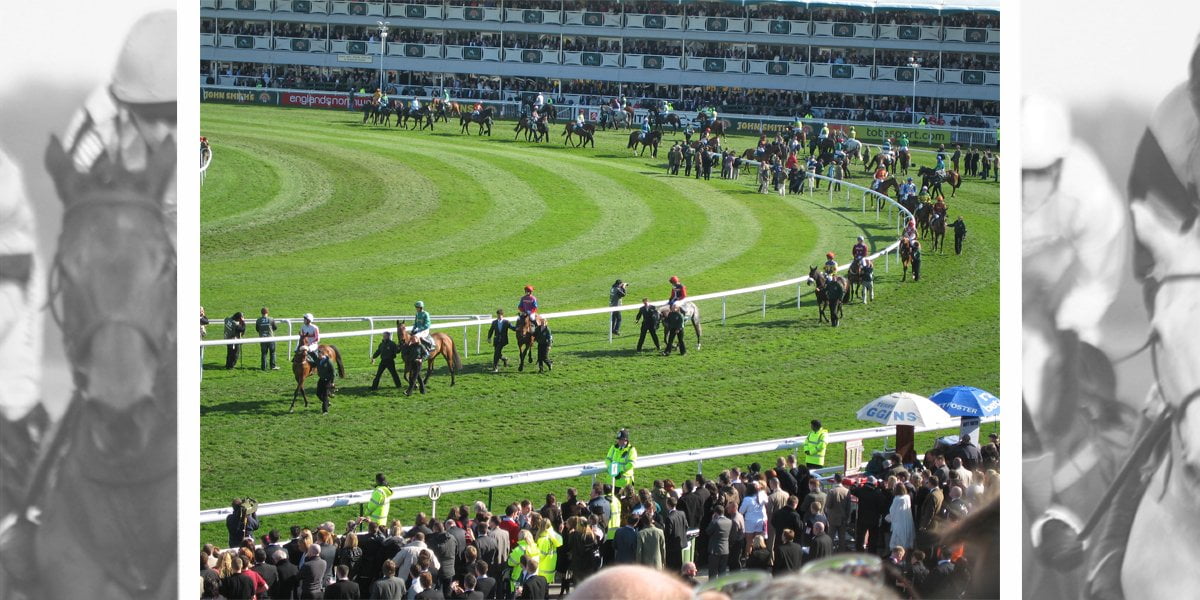 First run in 1894, the Princess Of Wales’s Stakes is named in honour of Princess Alexandra of Denmark, who became the Princess Of Wales on her marriage to the future King Edward VII in 1862.
First run in 1894, the Princess Of Wales’s Stakes is named in honour of Princess Alexandra of Denmark, who became the Princess Of Wales on her marriage to the future King Edward VII in 1862.
The mile and a half contest has been won by some of the very best horses to have graced the historic Newmarket turf.
Isinglass, who won the Triple Crown in 1893, was the inaugural winner in 1894 while the 1899 Triple Crown hero, Flying Fox, took in the Princess of Wales’s Stakes in the same year as his 2000 Guineas, Derby and St Leger victories.
Rock Sand, the 1903 Triple Crown winner, was another high-class winner in the early years, scoring as a four-year-old in 1904.
Lance Chest became the first horse to score back-to-back victories when he triumphed in 1912 and 1913, while another high-class winner was Blandford in 1922. Although he only ran four times in his life, Blandford went on to a highly-successful career as a stallion, as did the 1925 victor, Solario.
Airborne, the first post-war winner of the Derby in 1946 at 50/1, won the Newmarket contest in the same season, while a young Lester Piggott enjoyed one of his first big-race victories when riding Zucchero to success in 1952. The “Long Fellow” was just 16 at the time. Piggott also enjoyed back-to-back victories on Primera (1959 and 1960) as well as scoring on Lord Helpus (1977), Pollerton (1978), Light Cavalry (1981) and Head For Heights (1984).
Due to the quality of its winners, the contest was upgraded to Group Two status in 1978.
Two very good fillies to have won the Princess of Wales’s Stakes are Lupe (1971), who won the 1970 Oaks, and Height Of Fashion (1982). Owned by the Queen, Height Of Fashion was subsequently sold to Sheikh Hamdan Al Maktoum and became one of the most outstanding broodmares of her generation with the likes of Nashwan, Unfuwain and Nayef among her offspring. Unfuwain himself won the 1988 Princess of Wales’s Stakes.
In 1989, Carroll House was the winner of the Newmarket contest and went on to prove himself one of the outstanding middle-distance horses of his generation by landing the Prix de l’Arc de Triomphe later in the season.
One of the most durable horses in recent years was the 2000 St Leger victor Millenary. The John Dunlop-trained colt won the Princess Of Wales’s Stakes twice. In 2002, Pat Eddery had to use all his strength to score by a neck from Mubtaker, while the following year it was an easier victory as Millenary came home a length and a half in front of Bandari.
Bandari got his reward a year later however, as he overhauled favourite Sulamani to score by half a length. Bandari’s trainer Mark Johnston tasted success once again in 2006 when the tough Soapy Danger, successful earlier in the season in the two-mile Queen’s Vase at Royal Ascot, proved that he was equally effective over 12 furlongs with a courageous three-quarter length success over Mountain High.
Papal Bull scored a two and a half-length success in 2007 despite hanging to the right under Ryan Moore. The battle for the minor honours was a close one, with the subsequent St Leger winner Lucarno in fourth.
Lucarno turned the tables on Papal Bull in 2008, triumphing by a length and a quarter with his rival filling the runner-up berth.
Sir Michael Stoute enhanced his standing as the most successful trainer in the race’s history when gaining a seventh success in 2009. Ryan Moore was again in the saddle, this time to drive Doctor Fremantle to a half-length verdict over Schiaparelli, who was subsequently placed third behind Alwaary after causing interference in the closing stages.
Pictured: Jockey Ryan Moore
Allison is the Publisher of Eclipse Magazine. She loves going to the Races and is learning to bet (despite being officially the worst bettor in the History of the Universe), there’s a lot more to learn…






